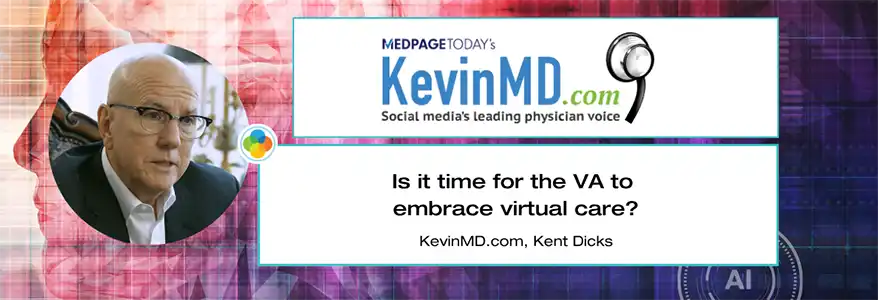On The Tech Glow Up Podcast Live from HLTH 2025, host Nathan C. Bower talks with Life365 CEO Kent Dicks about connecting patients to clinicians remotely and using AI to power virtual care.
One Connection, Endless Possibilities: How Life365 and Microsoft Fabric Are Reinventing Remote Patient Monitoring
- Blog
- |
- July 30, 2025

Author: Kent Dicks, CEO and Mario Vassaux, CTO – Life365
As healthcare shifts toward value-based care, the need for real-time, proactive patient engagement has never been greater. Traditional RPM solutions fall short - reactive, fragmented, and often too late.
In this new blog, Life365 CEO Kent Dicks and CTO Mario Vassaux unveil how a single connection between Life365 and Microsoft Fabric is transforming remote care. From streamlined device deployment to enterprise-grade analytics, discover how this integration powers a smarter, faster, and more connected RPM model, one that supports patients and drives clinical and research innovation.
Healthcare is undergoing a seismic shift. As we move from volume to value, health systems and providers face mounting pressure to deliver better outcomes, reduce costs, and expand access to care - particularly for the growing population of patients aging at home. The shift to value-based care has exposed a key vulnerability: the inability to monitor and intervene with patients until it's often too late.
Traditional Remote Patient Monitoring (RPM) solutions, while a step forward, are often reactive and fragmented. They typically begin tracking patients after discharge or once a condition has worsened. This delayed engagement limits clinical effectiveness, misses opportunities for prevention, and drives up avoidable costs.
Life365, integrated with Microsoft Fabric, offers a transformative alternative. Together, they power a next-generation RPM solution that is unified, intelligent, and proactive—all through a single, seamless connection from a health system’s EHR to an expansive ecosystem of medical devices, logistics workflows, and real-time data intelligence.
Rethinking RPM from the Ground Up
Most conventional RPM platforms are built on complex, multi-vendor infrastructures that require individual contracts, siloed device integrations, and long deployment cycles. For health systems and providers, this approach means months—if not years—of effort to operationalize remote care programs. It also means that by the time data is collected and analyzed, the patient’s condition may already be in decline.
By contrast, Life365 and Microsoft Fabric streamline the entire RPM lifecycle. With a single integration point, a clinician can initiate an order to remotely connect a patient, routing it to Life365’s CloudCare® Interoperability Engine for processing and fulfillment. AI then matches the patient’s clinical profile with the appropriate RPM device kit, which is shipped directly to the patient—pre-configured, plug-and-play, and ready to go.
The simplicity on the front end belies the power behind the scenes. Life365 ingests data from hundreds of connected OEM medical devices, normalizing formats via HL7 and FHIR, and feeds that data into Fabric and the patient’s health record in real time. This constant flow of PGHD (Patient Generated Health Data) creates the foundation for timely, predictive, and preventive care.
The Architectural Overview

Early PGHD: Powering Clinical Action and Research Discovery
Observational data collected directly from patients - especially early in their care journey - is no longer just a tool for clinical triage. It is now a strategic asset for research and discovery. By transforming high-resolution PGHD into structured, longitudinal datasets, Microsoft Fabric fuels enterprise-wide learning, population health initiatives, and even academic and pharmaceutical research.
Through Life365’s continuous remote capture and Microsoft Fabric’s ability to normalize, store, and analyze data at scale, health systems and researchers gain access to anonymized trends across entire populations. For instance, subtle behavioral shifts or long-term responses to interventions can be studied across demographics, geographies, or chronic conditions.
A detailed description of how Life365’s data is normalized and stored for analytics using healthcare data solutions on Fabric can be found here - <Integrating remote patient monitoring solutions with healthcare data solutions in Microsoft Fabric>
This new pipeline of clean, real-world data is essential for:
- Developing more effective predictive models
- Running observational studies in near-real time
- Supporting clinical trials with real-world evidence
- Accelerating health equity research by including underserved populations
- Informing public health policy with timely trend data
Fabric becomes more than a connector. It becomes a learning engine—fueled by the lives, behaviors, and health trajectories of remote patients who, until now, were largely invisible to traditional research models.
From EHR Order to Real-Time Insights
When a clinician determines a patient needs remote monitoring, they issue an order within their existing process work flow. That order is picked up automatically, where it’s formatted, validated, and routed to Life365. From there, device kits are assembled, configured, and shipped—no manual fulfillment, no guesswork.
Once the devices are in the patient’s hands, the simplicity continues. Each device—whether it’s a blood pressure cuff, scale, or psychological assessment tool—is preconfigured with wireless or cellular connectivity. Patients can begin monitoring within minutes of unboxing. The data flows securely back to Life365’s cloud, and from there into Microsoft Fabric, where it’s standardized and pushed into the EHR in real time.
Now, this same data—being used to alert care teams to clinical changes—also enters the broader enterprise knowledge stream. It becomes part of an integrated dataset used not just for care, but for informed decision-making at scale.
Intelligence Without Complexity
Microsoft Fabric's AI and machine learning capabilities analyze incoming PGHD. The system has the capabilities to detect trends and patterns and to provide notifications and alerts for earlier interventions to head off ED visits or hospitalizations.
And as this loop repeats across thousands of patients, the system becomes smarter. Every data point strengthens the machine learning models, improving future accuracy. Every case intervention contributes to a growing dataset that can be queried for longitudinal outcomes, intervention effectiveness, and population-wide trend detection.
This is healthcare's version of a feedback loop—one that doesn’t just respond to change, but learns from it.
Strategic Impact: Clinical, Financial, and Scientific
The benefits to patients are clear. Early intervention prevents escalation. Personalized care improves adherence. Real-time data enables fast decisions. But the organizational impact is just as profound.
Operationally, the single-connection model reduces IT burden, streamlines vendor management, and accelerates program launches. Financially, it lowers total cost of care through fewer hospitalizations, higher value-based reimbursements, and better resource allocation.
Scientifically, it creates a living lab—an always-on, anonymized data ecosystem that continuously feeds into analytics engines and research platforms.
This helps organizations not only provide better care, but become part of the future of medicine—advancing chronic care protocols, surfacing early indicators of emerging public health issues, and enabling AI researchers to build better models using real, clean, structured data.
Conclusion: The Future of Care, Research, and Intelligence—Connected
Remote care should not be a fragmented stack of loosely tied vendors. It should be streamlined, intelligent, and integrated. With Microsoft Fabric and Life365, a single connection provides access to a full RPM lifecycle—clinical engagement, device logistics, real-time analytics, and even strategic research data collection.
For health systems and providers, the advantages are immediate. For patients, outcomes improve. And for researchers, data finally becomes accessible in the moments it matters most.
This is not just remote care - it’s a strategic asset, driving the next generation of proactive medicine, continuous learning, and scalable discovery. All made possible by one connection.
Want to Learn More? Explore how Microsoft Fabric is transforming healthcare interoperability in this detailed blog and discover how Microsoft Cloud for Healthcare enhances provider productivity in this insightful article.
Latest Microsoft Cloud for Healthcare capabilities optimize payor, provider productivity
Would you like further technical deep dives, additional case studies, or customized messaging for other stakeholder groups? We are here to support your journey towards a fully integrated, value-based care future.
This complete overview represents our commitment to helping health systems and providers connect remote patients seamlessly into the enterprise, using the power of Microsoft Fabric and Life365. Together, we can transform healthcare delivery into one that is proactive, predictive, personalized, and ultimately, more sustainable for all.
Latest Resources
Latest updates from our blog, news, press releases, and more.
-1.png)


-1.png)